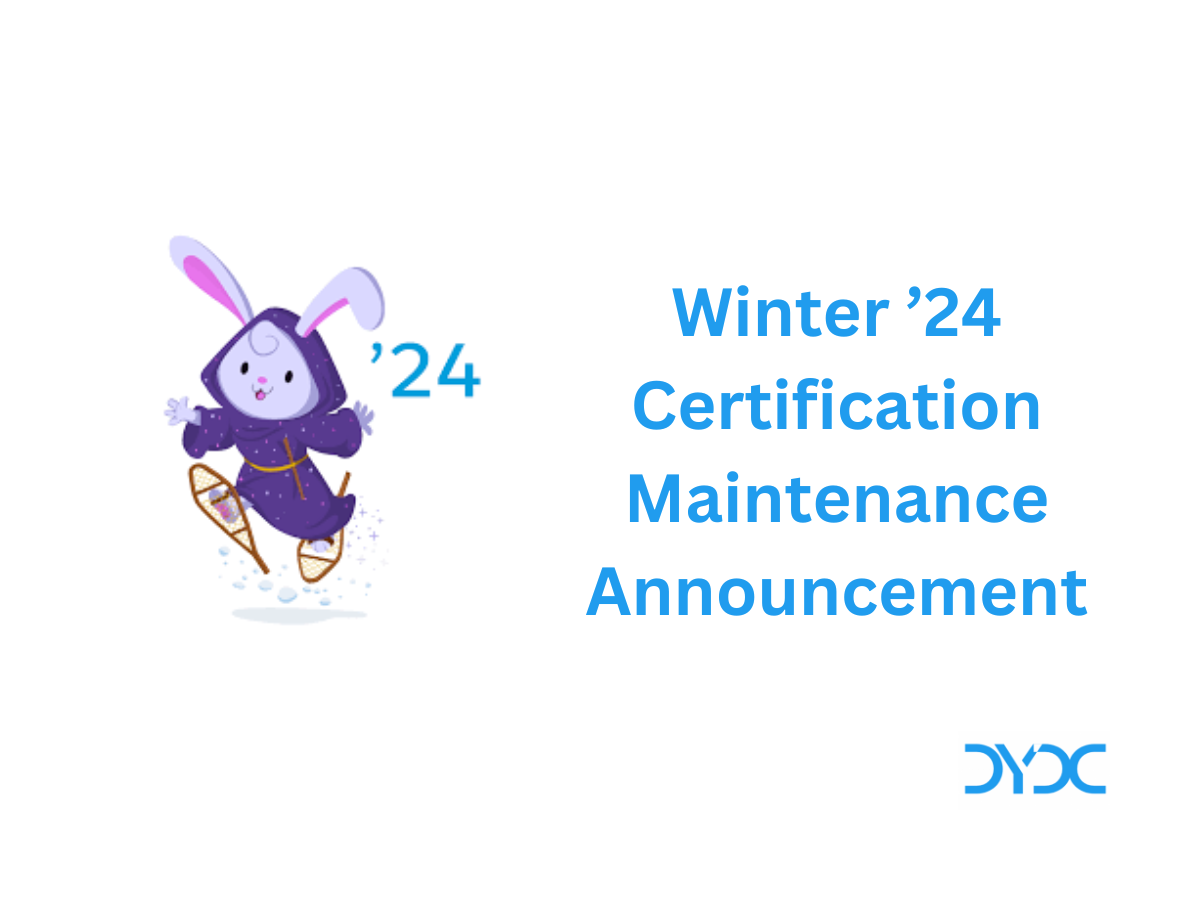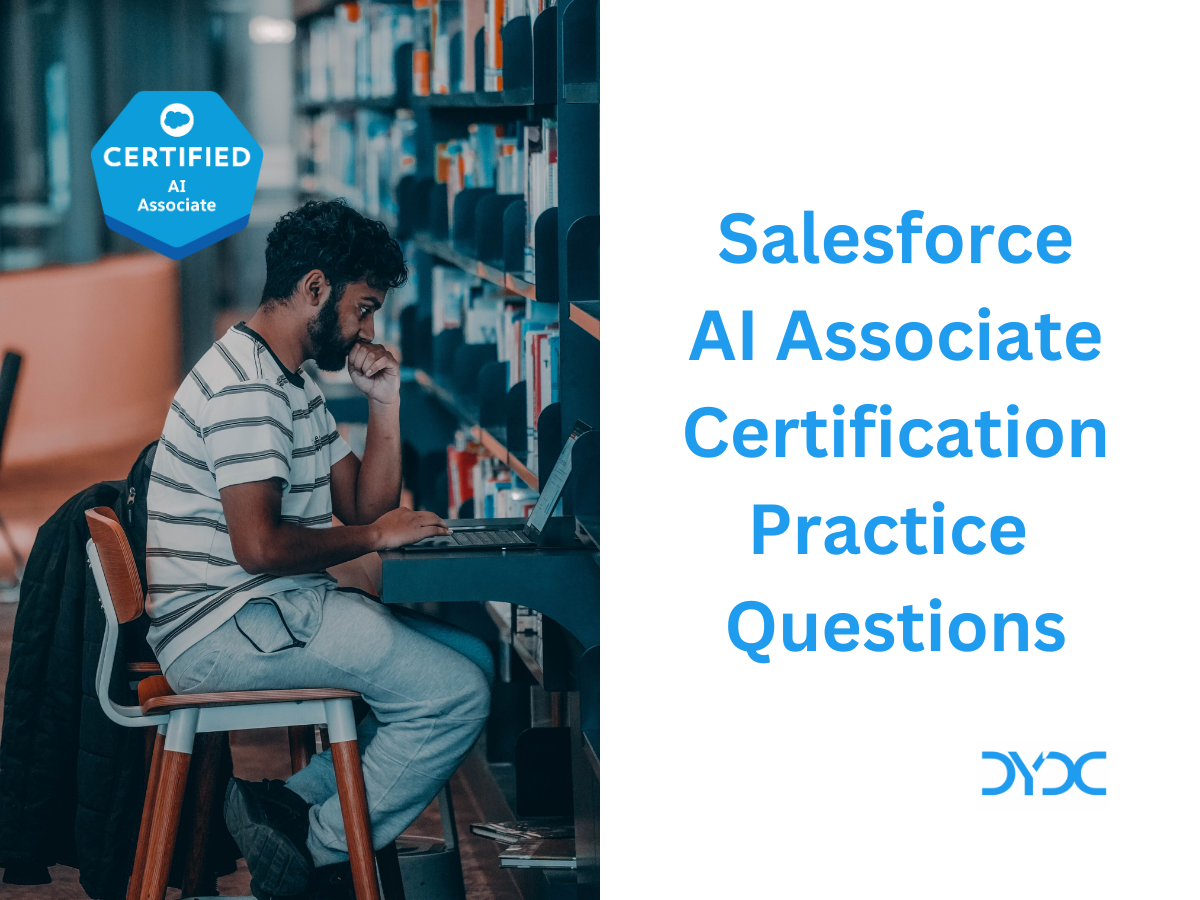How to Pass Salesforce Business Analyst Certification Exam
1. About the Salesforce Business Analyst Certification Exam
 | The Salesforce Certified Business Analyst (BA) certification exam is designed for Business Analysts with Salesforce experience. The successful candidate understands business needs, captures requirements, and collaborates with stakeholders to support the development of Salesforce solutions which drive business improvements. |
| Content | 60 multiple-choice/single-select questions and 5 non-scored questions | |
| Time allotted | 105 minutes (time allows for unscored questions) | |
| Passing score | 72% (44 Questions out of 60) | |
| Exam Fee | USD 200 plus applicable taxes | |
| Retake Fee | USD 100 plus applicable taxes | |
| Prerequisite | None |
Please see the BA Certification Exam Guide for the most up-to-date information on Business Analyst Certification.
2. Salesforce Business Analyst Certification Exam Trailmix
3. Salesforce Business Analyst Certification Exam Practice Questions and Flashcards
4. Exam Preparation Strategy and Tips
Note: One important point to note about Salesforce Business Analyst exam is that usually Salesforce Certifications have questions where you have to select:
# One correct answer from four options
#Two correct answers from four options
# Three correct answers from five options
In Salesforce Business Analyst Certification exam you have to select one correct answer from three options.
5. Important Topics for the Salesforce Business Analyst Certification Exam

The Business Analyst Certification Exam is divided into following six categories:
5.1 Customer Discovery: 17% (10 Questions)

- Salesforce business analysts help guide businesses to improve business processes and efficiency in Salesforce. They elicit, document, and analyze requirements around business challenges, and then produce data-driven solution.
- Required Skills for Salesforce Business Analyst
- Soft Skills
- Needs analysis
- Eliciting requirements
- Business case definition
- Requirements writing
- Requirements review
- Flow and process diagramming
- Wireframing
- Business data analytics
- Problem solving
- Technical Skills
- AppExchange
- Automation
- Collaboration
- Data management
- Reports and dashboards
- CRM
- Platform
- Sales and marketing
- Soft Skills
- Key activities of Salesforce Business Analyst
- Communication
- Elicitation
- Documenting requirements
- Analyzing information
- Facilitating solutions
- Implementing solutions
- Testing
- Journey maps are documents that visually illustrate the experiences customers have with a business or an organization
- Benefits of Journey Mapping
- Better team alignment
- Strategic thinking
- Deeper understanding of customer pain points
- Increased empathy
- A strong case for innovation
- A guide to measuring impact
- Architecture of a Journey Map
- Phases
- Actions
- Thoughts
- Feelings
- Touchpoints
- Context
- Opportunities
- Who to Invite to the Journey Mapping Workshop
- People who know your customer
- People who are generative
- People who are optimists and realists
- People who bring diversity
- Journey Mapping
- Innovation Customer Discovery
- Business Analyst Best Practices
- Customer-Centric Discovery for Salesforce Partners
- Consequence Scanning is a way for organisations to consider the potential consequences of their product or service on people, communities and the planet
- Three Application Lifecycle management (ALM) development models.
| ALM Model | Description |
|---|---|
| Change set development | In the change set development model, teams can manage their application by using declarative tools. They don’t need to use a command-line interface or a version control system. |
| Org development | The org development uses some tools that provide greater flexibility and scalability, new ways to track and manage change (e.g. version control) , and a different method of deployment (e.g. CLI). |
| Package development | Instead of building code and customizations for the org, you create a package (a logical set of code) |
- Benefits of Center of Excellence
- Prioritize Across Teams
- Streamline Processes
- Plan for Growth
- Reduce Risk
- Top Skills of the Business Analyst
- Information Discovery
- Analysis and Synthesis
- Communication, Collaboration, and Documentation
- Business Analyst: Skilling Up for the Implementation Lifecycle
- Drucker School—Organizational Change Leadership
- BA performs various types of analyses
| Analysis Type | Description |
|---|---|
| Enterprise Analysis | Learn and understand an organization’s structure, including who reports to whom |
| Strategy Analysis | Identify the need of strategic or tactical importance |
| Stakeholder Analysis | Individuals or groups who make decisions and who have an important role in determining the priorities and requirements |
- Tips for Engaging Stakeholders to Achieve Project Goals
- Communicate by Making It a Conversation
- Share How You Can Help
- Get Commitment for Next Steps
- Develop Relationships
- Types of Documentation
| Document Type | What It Is |
| Glossary of terms | Glossary of key terms and definitions that will aid comprehension among project teams. |
| RACI chart | RACI chart is a matrix that specifies who is in charge of what in the context of the business analysis effort. RACI stands for: – Responsible: A person who performs an activity or does the work. – Accountable: A person who is ultimately accountable for the outcome. -Consulted: A person who needs to provide feedback or contribute to the activity. – Informed: A person who needs to know of a decision or action. |
| Interview and elicitation records | These documents collect critical information from stakeholders. |
| Stakeholder analysis | This document identifies: Who you should talk with to understand the business problem Who can help flesh out the requirements The individuals who can give you a range of perspectives |
| User stories | A user story describes the functionality that a business system must have in order to be developed. It is also known as a ticket or work item. The user story format is “As a…. I want to… So that I can…” |
| Use cases | A use case identifies, defines, and organizes the system requirements from the perspective of a user. |
| Business analysis plan | This plan outlines all of the business analysis activities that will take place during the course of the project. |
| Current state analysis | If the current business process or domain is unclear, the BA analyzes and documents the current state before scoping a project to improve it. |
| Scope statement specification | This is the most basic deliverable for any project. It is a clear definition of what must be accomplished and the work that must be completed in order to complete the project or product. |
| Functional requirements specification (FRS) | This is the set of business requirements defined from the standpoint of the end user or the business. It will outline the anticipated outcomes. |
| System requirements specification (SRS) | This document describes how the entire system should work and lists the system’s hardware, software, and functional and behavioral requirements. |
| Gap analysis document | This document describes the differences between the current and intended processes. |
| Change request logs | This document serves as a log of all change requests in the project, including the date of the request, the requester, and any other pertinent information. |
| Wireframes and other visual documentation | This document contains user interface renderings, often in the form of low-fidelity wireframes. |
| Test plans, test cases, or user acceptance test plans | These documents describe the team’s test plans and detailed test cases for validating the functional requirements. |
| Change management | This document describes the procedure for implementing changes to the business. |
- Salesforce Optimizer: a powerful, free, and simple tool that takes a snapshot of your Salesforce org and looks for potential problems in your implementation.
- Optimizer can help you address common challenges such as
- I want to clean up my org, but I don’t know where to start.
- My users are complaining about slow performance and busy page layouts.
- What Salesforce governor limits am I approaching?
- I can barely keep up with Salesforce’s releases. What new features am I missing out on?
- We’re planning the move from Classic to Lightning Experience.
- Most common and critical issues that Optimizer flags
- Object with more than 350 fields
- Too much automation (sharing, flows, validation rules) on a single object
- Too many users with Modify All Data and Customize Application permissions
- Multiple Triggers per Object
- My Domain not activated
- Lightning Usage App: lets you monitor adoption metrics, such as daily active users and the most visited pages in Lightning Experience. The available metrics include:
- Daily and monthly active users in Lightning Experience and the Salesforce mobile app
- Daily and monthly switches to Salesforce Classic by total number of switches and the number of unique users that switched
- Profiles and users that switched to Salesforce Classic the most
- Types of browsers used to access Lightning Experience and the Salesforce mobile app
- Slowest desktop record pages
- Pages viewed most often in Lightning Experience
- Number of active user, feature, and permission set licenses
- The User Interface box in the system overview page shows usage information for:
- Custom apps
- Site.com sites: Only published Site.com sites
- Active Salesforce Sites
- Flows: Only active flows
- Custom tabs
- Visualforce pages
- Review Org Health: A Session (Exclusive to Premier and Signature Success Plan customers) where you’ll learn how to check your system’s overall health and get recommendations on how to improve it. A Salesforce expert who will guide you through this process:
- Discovery
- Discuss current challenges
- Demonstrate and use Salesforce Optimizer and Security Health Check
- Analysis
- Assess key areas of platform performance, including declarative and programmatic customizations
- Identify key areas of improvement and share best practices
- Outcomes
- Readout of Salesforce Org Health
- Provide additional learning resources
- Discovery
- A prototype is a first pass, a simple sketch of an idea you want to implement
- Why Prototyping is important?
- Prototypes make concrete the ideas that are in our heads
- Prototypes are cheap and fast
- Prototypes help creators take ownership of the solutions
5.2 Collaboration with Stakeholders: 24% (14 Questions)

- Scrum is a project management framework which helps people and teams deliver value incrementally in a collaborative manner.
- Scrum core values
- Focus
- Courage
- Openness
- Commitment
- Respect
- Scrum Roles
- The ScrumMaster
- The Product Owner
- The Team
- The Shared Service Subject Matter Expert (SMEs)
- The Technical Program Manager (TPMs)
- The Functional Manager
- Scrum elements of delivery
- Product Backlog
- Sprint Backlog
- Potentially Shippable Work
- Kanban is a lean method to manage and improve work across human systems. This approach aims to manage work by balancing demands with available capacity, and by improving the handling of system-level bottlenecks.
- Four key traits of Kanban
- Visualize workflow
- Limit work in progress (WIP)
- Incremental and evolutionary change
- Kanban includes metrics
- Lead time: Average time to complete one item, sometimes called cycle time
- Throughput: Amount of work completed in a single period of time
- Key differences between the Scrum and Kanban workflow
| Scrum | Kanban | |
|---|---|---|
| Who prioritizes it? | Product owner prioritizes on product backlog | Product owner prioritizes on product backlog |
| Where does it go? | The product backlog is reordered for the next sprint. | The product backlog is continuously reordered for the next available person with capacity. |
| When does the work start? | During sprint planning, the team commits to the work in the next sprint. | As soon as there is capacity to work on it. |
| Why is there a delay? | Scrum focuses the team to deliver on their sprint commitments, and interruptions mid-sprint are discouraged. | Kanban focuses on efficient flow of work, so the top of the backlog is always the next thing to be worked on. |
| How long does it take to deliver? | It can be 2 weeks or more, depending on sprint status. | As soon as it is completed. |
- Empathy is the ability to recognize and understand others’ emotions, and take active interest in their concerns.
- Difference between Sympathy and Empathy
- Sympathy. A sympathetic response can include emotion, but it’s focused on keeping distance, makes a judgement about the person or how they should react, and doesn’t take the other person’s perspective into account.
- Empathy. An empathetic response recognizes the other person’s perspective and emotions, communicates these back to them, and withholds judgement.
- Guidelines for developing positive, healthy relationships at work
- Accept and celebrate a diverse workplace
- Develop active listening skills
- Expand other communication skills
- Take time to support those you lead
- Manage technology and anticipate its impact
- Share your wisdom and invite the wisdom of others
- Develop honesty and trust
- Process improvement is a set of best practices and steps to identify and simplify existing processes in a business.
- Sales enablement is the process of giving your sales team everything they need to close deals.
- How do you succeed in sales enablement?
- Goal Setting
- Communication
- Time Management
- Content Creation
- Learning and Development
- Digital Transformation
- Sales Enablement Plan
- Stakeholder Commitment
- Sales Enablement Team
- Sales enablement best practices
- Size your enablement to fit your needs
- Lead from the top and be open to feedback
- Build a sum that’s more than its parts
- Content is:
- A product that requires research, design, development, delivery, and iteration.
- A system that connects people, processes, and technologies.
- A set of data that must be structured and modeled.
- A business asset that can be tied to objectives, metrics, and results.
- Content strategy helps you provide the right content to the right people in the right place at the right time… and for the right reason.
- Virtual Whiteboarding: Quick Look
- Survey Basics
- Diagramming Essentials
- Writing Good Salesforce Requirements: A Dramedy In Two Acts
- 5 Key Steps To Documenting Process Like A Rock Star
- Sales Operations Use Case and Best Practices
- User Management
- Salesforce Adoption Strategies
- Atlassian Agile Basics
- Create Strategic Company Alignment With a V2MOM














I have passed my exam by reading your notes plus trailmix.
Congratulations Abhinav!
Could you please share the official trail mix link
Here is the BA Cert Trailmix link: https://trailhead.salesforce.com/en/users/strailhead/trailmixes/prepare-for-your-salesforce-business-analyst-credential
Cleared my exam, notes were very helpful!
Are those notes enough to pass exam?
Certification Trailmix and notes should be sufficient.
Extremely useful as an exam prep. Great to freshen up on concepts right before taking the exam. I passed on my first attempt.
Thank you Kevin! Congratulations for passing the BA exam!
Thanks Yadav Bhai. Really appreciate your notes. cleared my exam today
Congratulations Harish! Many more to come!
This is very crisp and precisely put together.
Thanks you !
Would someone recommend any additional reading or just the official resource ?
Official Trailmix will be sufficient to pass this exam!
Great initiative has been taken and also share the informative detail on BA analytics certification documents.
Could you please share the B2C commerce architect certification related documents?
This was very useful.. just cleared the cert.
Congratulations!
I love the way you curated these information. Well cone!
Great article! Please share any other tips that you have for the cert preparation. There are no flashcards or lot of information out there except few and the trailmix. This article is definitely very helpful overall.
Hi Pooja,
The official certification trailmix is sufficient to pass the exam. You can find some practice questions here: https://trailhead.salesforce.com/content/learn/modules/salesforce-business-analyst-certification-prep
Thank you for your guidance!
Great article
Thank you Kiran!